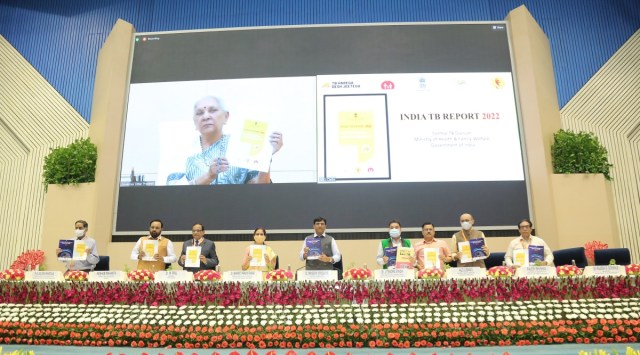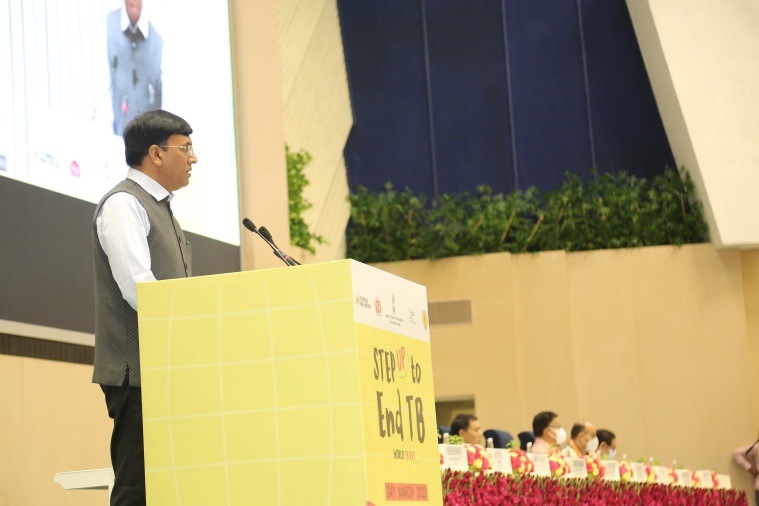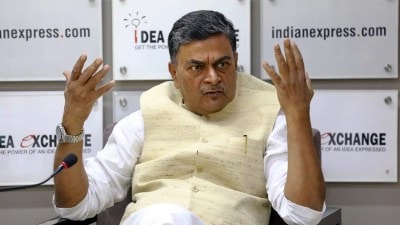India reported 19.33 lakh cases of Tuberculosis in 2021, according to the India TB Report 2022 released on Thursday. While this was not as high as pre-pandemic levels, TB cases increased in 2021 as compared to the previous year when 18.05 lakh cases were reported, a 25 per cent decline owing to the Covid-19 pandemic-related lockdown and restrictions.
There were 21 lakh cases detected last year, according to a senior health ministry official, with some cases being reported after the compilation of the India TB report.

This means, there was a 16.3 per cent increase in reporting as compared to the year before. In comparison, over 24.04 lakh cases were detected in 2019.
Story continues below this ad
“There are estimated 20 to 25 lakh TB cases in the country every year. We have seen Covid-19 kill nearly 5 lakh people, but more than 4 lakh people die of TB each year. And, these are mostly people below the age of 60 years; the earning members of the family. The community and the government need to come together to fight TB and eliminate TB by the 2025 deadline set by our Prime Minister,” said Union Health Minister Mansukh Mandaviya on the occasion of World TB Day on Thursday.
 ‘Step Up to End TB’ event was held at Vigyan Bhawan, New Delhi. (Source: Twitter/@mansukhmandviya)
‘Step Up to End TB’ event was held at Vigyan Bhawan, New Delhi. (Source: Twitter/@mansukhmandviya)
At the event, Union Minister of State for Department of Science and Biotechnology Dr Jitendra Singh also announced the Dare2eraD TB umbrella TB programme, comprising of InTGS – Indian Tuberculosis Genomic Surveillance Consortium, InTBK Hub – Indian TB Knowledge Hub- Webinar Series, and host directed therapies against TB and developing an evidence-based regimen for treating extra-pulmonary Tuberculosis.
With India aiming to eliminate the bacterial disease by 2025, five years ahead of the global target, the programme has focused on better diagnostics, shorter courses of treatment, and active case finding among vulnerable populations.
Eighteen states, including Kerala, Madhya Pradesh, Tamil Nadu, Punjab, Uttar Pradesh and West Bengal, have already implemented state-specific strategic plans.
Story continues below this ad
The government has also started sub-national certification for elimination with 201 district-level claims, and 10 state/Union Territory-level claims for reducing incidence have been made in 2021.
 (Source: Twitter/@mansukhmandviya)
(Source: Twitter/@mansukhmandviya)
The national programme defines elimination as reporting no more than 44 new TB cases or 65 total cases per 100,000 population by 2025. The estimated TB incidence or new TB cases for 2020 stood at 188 as per the report.
The programme also aims to reduce the mortality to 3 deaths per 100,000 population by 2025. There was a slight increase in the number of deaths in 2020 – the estimated toll of all types of TB was 4.93 lakhs in 2020, 13 per cent higher than of the 2019 estimate.
The third aim of the national plan to eliminate TB is to reduce catastrophic costs for the affected family to zero. However, the report states that 7 to 32 per cent of those with drug sensitive TB, and 68 per cent with drug-resistant TB experienced catastrophic costs.
But, all is not glum.
Story continues below this ad
The report shows that 95 per cent of those who were diagnosed with TB were put on the therapy in 2021. Around 90 per cent of those with multi-drug resistant TB and 89 per cent with extremely drug resistant TB were put on treatment.
The government also introduced a shorter oral course Bedaquiline (Bdq) TB regimen to ensure people completed their treatment.
 There is a need for the programme to push into tribal areas where the prevalence of TB is higher said NITI Aayog member Dr V K Paul.(Source: Twitter/@mansukhmandviya)
There is a need for the programme to push into tribal areas where the prevalence of TB is higher said NITI Aayog member Dr V K Paul.(Source: Twitter/@mansukhmandviya)
The government has worked on improving diagnosis of the infection, gearing towards less accurate smear tests being replaced by Neucleic Acid Amplification Test (where the genetic material of the bacteria is amplified just like the RT-PCR test for Covid-19). The number of NAAT testing centres increased to 3,164 in 2021 from 628 in 2017.
The number of microscopy centres increased to 21,717 in 2021 from 15,307 in 2017. The number of labs that tested for sensitivity to various antibiotics increased to 80 in 2021 from 50 in 2017. And, the government also introduced 80 mobile TB testing vans in 2021.
Story continues below this ad
NITI Aayog member Dr V K Paul, on the occasion, said, “We have seen in the wake of this pandemic that the diagnostic arm can be scaled up across the nation in a phenomenal way to reach those in the villages, those far from the centre of activities in the cities. During the pandemic, most of the states also set up mechanisms to support patients at home; Covid-19 kits were sent home. Even in TB, this support is needed. We need someone who can go home and talk to a patient, tell them they have to take the medicine, eat good food, and quit tobacco.”
He also said there was a need for the programme to push into tribal areas where the prevalence of TB is higher.
A campaign for active case finding – going to the community instead of people with symptoms coming to healthcare centres — conducted in 2021 screened 2.23 crore people and resulted in the detection of 73,772 additional cases. Not only that, the coverage for a preventive therapy was also extended to all household contacts of a TB patient irrespective of their age and other risk factors in 2021.



 ‘Step Up to End TB’ event was held at Vigyan Bhawan, New Delhi. (Source: Twitter/@mansukhmandviya)
‘Step Up to End TB’ event was held at Vigyan Bhawan, New Delhi. (Source: Twitter/@mansukhmandviya) (Source: Twitter/@mansukhmandviya)
(Source: Twitter/@mansukhmandviya) There is a need for the programme to push into tribal areas where the prevalence of TB is higher said NITI Aayog member Dr V K Paul.(Source: Twitter/@mansukhmandviya)
There is a need for the programme to push into tribal areas where the prevalence of TB is higher said NITI Aayog member Dr V K Paul.(Source: Twitter/@mansukhmandviya)





